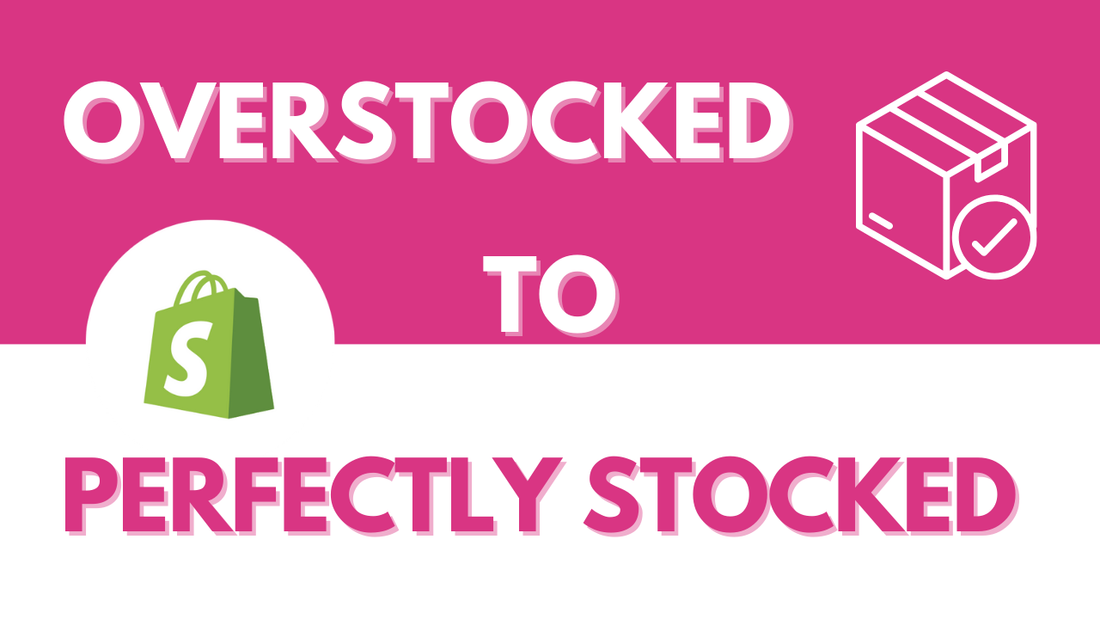You can also listen on:
Apple Podcasts / Spotify
In today’s episode, we're diving into holiday inventory planning with Jill from Inventory Planner, a part of Sage. As we gear up for the holiday season, it's crucial to master your inventory to avoid dead stock and stockouts, boosting your profits along the way. Inventory Planner offers a 7-day free boot camp that provides daily tips and strategies, helping you streamline your inventory management.
How to Plan Your Shopify Store for the Holiday Season?
Poor inventory planning can result in dead stock that ties up capital and takes up valuable warehouse space. This is where tools like Inventory Planner come into play, helping merchants forecast customer demand accurately, avoid overstocking, and ensure they have the right products available when needed. By leveraging data and intelligent planning, e-commerce businesses can optimise their inventory, boost profits, and maintain healthy cash flow.
The Psychology of Shopify Inventory Management
You can't solve most marketing problems with numbers alone; they must be used alongside human insight. Data might suggest increasing stock by 10%, but factors like a celebrity endorsement might mean you should increase it by 100%. It's crucial to use both data and human intuition. For example, testing product popularity with VIP customers can provide valuable insights before committing to large orders. This approach balances the science of data with the art of marketing, ensuring decisions are well-rounded and effective.
The Symbiotic Relationship of SEO and Merchandising
Building strong internal relationships and communication is essential, especially as a company scales. Marketing teams should guide the merchandising teams on what to stock based on customer trends and demand data. This ensures that inventory aligns with what customers want to buy, rather than the merchandising team dictating what to sell without customer insights. Using SEO and keyword data to forecast demand can help avoid overstocking unwanted items and ensure popular items are adequately stocked. This collaboration can prevent unhealthy dynamics and ensure that inventory decisions are customer-focused, driving better sales and reducing unsold stock.
Ideas During Low Inventory Periods
For the health of your business and cash flow, it's crucial to manage inventory efficiently—balancing how quickly you can bring stock in and move it out, while maintaining healthy profit margins. Equally important is having a robust discount schedule. Plan ahead before peak seasons by setting specific dates to check inventory levels and implementing predetermined discount strategies to move excess stock. This approach helps avoid post-season surplus, maximizes sales during peak periods, and ensures you're prepared for unexpected spikes in demand. Maintaining clear communication between marketing and merchandising teams is essential to ensure a smooth and profitable operation.
How To Do Shopify Loyalty Without Discounting
Effective communication between marketing and merchandising teams is crucial for the health of your business, particularly regarding cash flow and inventory management. The speed at which you can bring in and sell inventory, as well as the profit margins you're achieving, are both critical factors. To ensure success, it's essential to have a clear discount schedule in place. This plan should include specific dates for inventory checks and predetermined discount strategies to move excess stock, avoiding post-season surplus. Additionally, aligning your inventory planning with marketing insights and sales data can help you make informed decisions, ultimately driving profitability and ensuring you have the right products available at the right time.
As your business grows, managing inventory efficiently is crucial. Start with drop shipping to test new products and identify successful ones before bringing them in-house for better margins. Given that inventory and marketing are major expenses, staying on top of them is essential. Use technology to automate data collection and analysis with tools like inventory planners, which sync data and provide up-to-date insights, saving time and resources. Automating reporting processes with tools like Google Data Studio streamlines weekly meetings, providing real-time data and reducing manual work. This approach ensures informed decisions based on current data, enhancing overall business performance.
Check out the full Shopify Inventory Planning Episode here.

